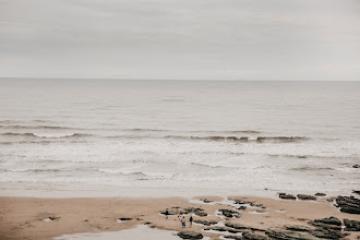The pristine allure of the North East’s coastline often beckons sun-seekers and swimmers, yet beneath the surface lies a critical concern: the state of its water quality. As summer approaches, the Environment Agency’s latest assessments provide a sobering look at the health of our beloved bathing spots, highlighting areas where the dream of a refreshing dip could turn into a genuine health risk.
These annual classifications, vital for public safety, are derived from rigorous water samples collected throughout the bathing season, typically from May to September. Scientists meticulously test for harmful bacteria, primarily E.Coli and intestinal enterococci, which serve as key indicators of potential sewage contamination and can cause illness in those who come into contact with the water, underscoring the urgency of maintaining high bathing water standards.
Among the most concerning revelations is the persistent struggle of Cullercoats Bay. A popular destination for cold-water enthusiasts in North Tyneside, this picturesque bay has unfortunately received a “poor” rating for an alarming fifth consecutive year. Such repeated failures put the site at significant risk of losing its official designated bathing water status, a testament to the ongoing challenges with coastal pollution in the area.
Adding to the concern, once-exemplary beaches like South Shields and Seaburn, previously celebrated for their “excellent” water quality in 2023, have seen a noticeable decline. Their recent downgrade to a “good” rating in last year’s assessment signals a broader trend of deteriorating environmental health in some of the region’s most frequented coastal areas, urging a closer look at the factors influencing these changes.
Further complicating the regional picture, Littlehaven beach in South Shields, a cherished local gem, was newly designated as a tested bathing site. However, its inaugural assessment delivered a disappointing “poor” rating, placing it alongside 36 other UK beaches grappling with similar significant water quality issues. This immediate classification underlines the widespread nature of the challenge facing many UK beaches.
While several other well-loved North East beaches, stretching from the rugged Northumberland coast down to the industrial Tees Valley, have commendably retained their “excellent” rating for multiple years, the recent downgrades serve as a stark reminder. It prompts a crucial question for every beachgoer: is your go-to spot genuinely free from contaminants, and are you fully aware of its current environmental status before taking the plunge?
The responsibility for managing sewage and ensuring acceptable water quality across these bathing sites falls primarily on Northumbrian Water Ltd. Environmental advocates, such as Ali Elly, a regional representative for Surfers Against Sewage, have voiced profound alarm regarding what they describe as a “persistent failure to safeguard water quality in the North East,” calling the situation unacceptable and demanding transparent monitoring.
In response to growing public pressure and environmental outcry, the government earlier this year pledged major reforms aimed at securing cleaner water for all. These impending legislative changes include provisions for enhanced monitoring throughout the year and the removal of the automatic de-designation of bathing water status after five consecutive “poor” ratings, signaling a potential shift in how coastal pollution is addressed.
For those seeking real-time information and wishing to contribute to the broader campaign for cleaner waters, the ‘Safer Seas and River Service’ (SSRS) app, provided by Surfers Against Sewage, offers a valuable resource. It delivers instant pollution alerts and enables users to document evidence of environmental issues or illness, empowering the public to stay informed and actively participate in advocating for improved beach safety and environmental health across the UK beaches.






Leave a Reply